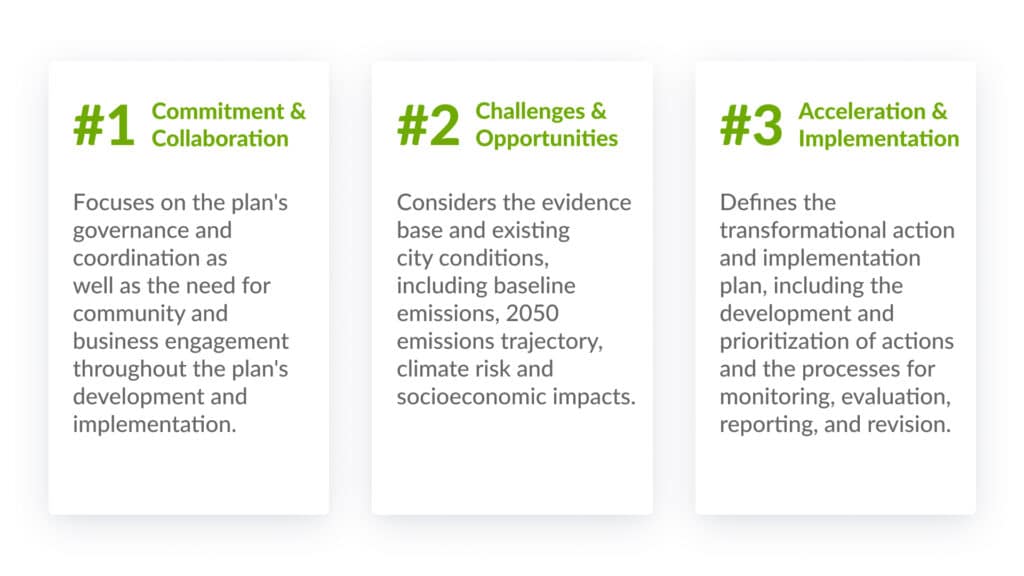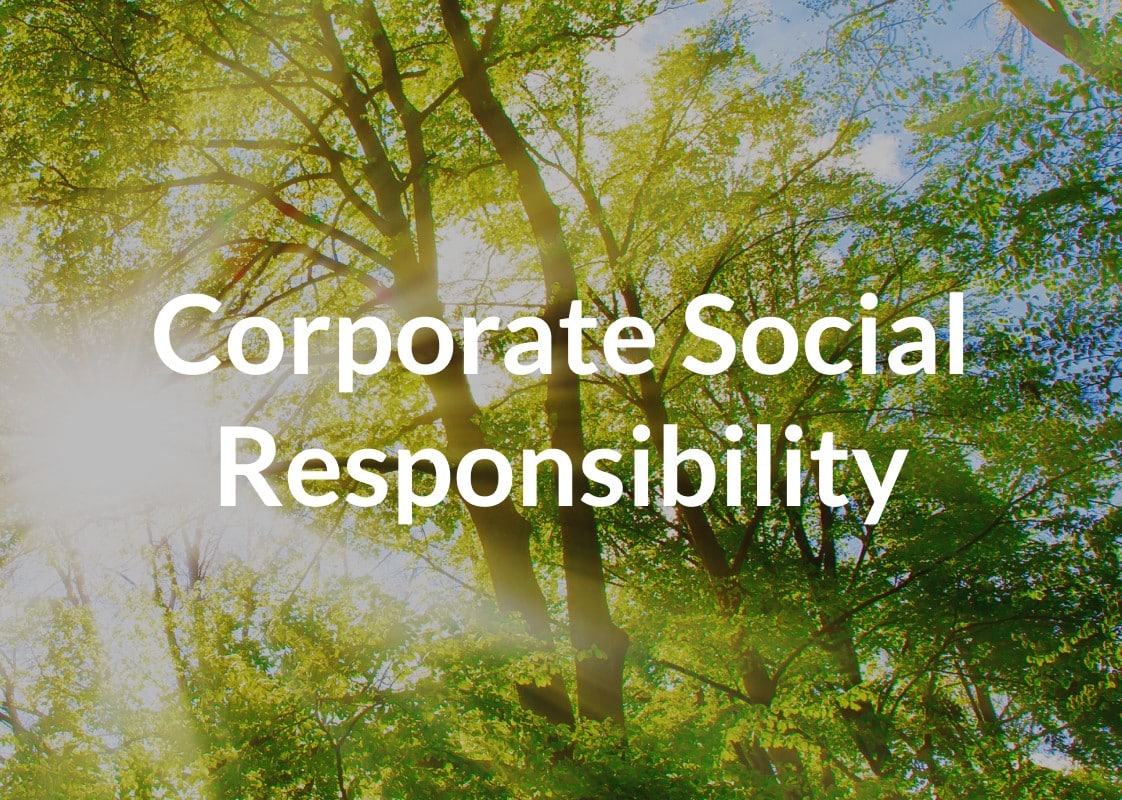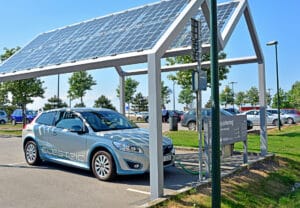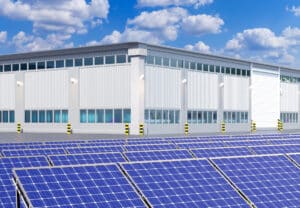
Time is ticking as the journey to Net Zero by 2050 continues.
Leading companies worldwide are undertaking key government initiatives to reach the much-needed Net Zero emissions standard within the next three years.
While it’s certainly a challenge for many industries, the time is now to buckle down and focus on saving the planet.
The best time to start this push was twenty years ago, but the next best time is today. We’re already seeing an increase in extreme weather patterns and abnormal temperatures related to climate change, and even with direct action, the prognosis for the climate’s stability looks grim.
The good news is that with a coordinated effort and integration of the new technologies developed daily, we may be able to interrupt the runaway effects of climate change.
Now more than ever, we need plans to keep us on track and guide our progress toward a brighter future.
6 Must-Haves for Every Climate Action Plan

Starting to prepare your business for the changing future? Here’s how to best create a climate action plan.
1. Determining the lay of the land
The first step in good planning is to assess current challenges and opportunities.
Just by going through the process of fully understanding your circumstances, you will likely identify several climate-adjacent issues. Once you have an inventory and the most appropriate targets, it’s time to create relevant goals.
Countries and governments worldwide have already gone through this process and – after investigating established standards – committed in some fashion to Net Zero by 2050.
This commitment means that, after calculating the emissions output of their ongoing projects and infrastructure and those derived from anticipated growth, they are determined to cut down or offset those emissions.
While Net Zero is a good goal, it’s more important that your climate action plan reflects your organization’s capacity to adapt to greener strategies and technologies.
There are a wide variety of options, whether it’s becoming 100% powered by renewable energy or using established market mechanisms like carbon credits and offsets to reduce your total impact.
2. Switching to renewable energy
Renewable energy has shed its skin of high upfront and overall costs. Some renewable sources have become cheaper to produce energy from than comparative fossil fuels – particularly wind and solar.
Clean energy itself is seeing significant growth and change as organizations of all shapes and sizes commit to and begin to work toward sustainable, environmentally conscious operations.
Switching to renewable energy sources is paramount to creating a significant and long-lasting impact on business-related carbon emissions from all sources.
According to recent estimates, the cumulative economic effect of achieving climate-related goals for 2050 would reach over $160 trillion.
3. Swap out legacy energy guzzlers
As an organization with widespread sites or large surface areas, you’ll be no stranger to a hefty electricity bill. One of the biggest culprits of energy waste and loss is aging and unoptimized equipment.
One of the first steps in this process of fighting both climate change and your bills is swapping out standard or halogen lights and bulbs with an LED alternative. Between the reduction in energy use, and heat needed to dissipate from the lights themselves, there are multiple vectors to save on energy use here.
However, this process goes beyond swapping out lightbulbs. Improperly sized or outdated generators and backup batteries, aging HVAC systems, and other equipment all take away from potential energy efficiency and savings.
4. Start monitoring energy usage
Beyond just swapping out old light bulbs and energy equipment, these new and old assets must be actively monitored to ensure they perform as expected.
Overarching visibility over your organization’s local and remote energy use and carbon emissions is critical to creating an effective climate action plan.
This also includes establishing thresholds with alerts attached to unexpected behavior or potential malfunctions that could be detected ahead of time and mitigated.
Monitoring assets improves the performance, alerts you to any issues, and adjusts the output energy saving levels.
5. Optimizing current storage
The optimum temperature for most data centers is around 23°C or 66°F. However, to maintain a safe margin, the temperature is often kept around 19°C.
As long as conditions are well-maintained, every 1°C increase in overall ambient temperature can reduce 8 to 9% of an organization’s energy costs.
In addition, reorganizing your aisles to be staggered between hot and cool can save up to 40% on HVAC system energy use.
6. Step into digital
In 2022, it’s time to embrace all things digital.
With apps, websites, and software to help you stay on track, there’s no need for it to be done on paper.
So much of daily office tasks and data tracking can be accomplished faster and more effectively while reducing the environmental impact by moving to online platforms.
Digitalization reduces paper waste which accounts for 70% of total waste produced in offices in the US, but it also increases consistency and accuracy with information and data tracked in one system rather than multiple pieces of paper that can easily go missing.
Why do companies need a climate action plan?
Climate change is here, and it’s here to stay if we don’t do anything about it. Our loved ones, countries, societies, and economies are all at the mercy of wherever the local climate ends up.
But, what does this specifically mean for business?
Developing a climate action plan is the best way to strategize your business’ future. Consider your goals, a budget for increased expenses in the short term, and the need to update infrastructure.
If you deal with technology that relies on batteries or computers, your HVAC bill may increase dramatically.
Whatever local weather patterns exist today, prepare your buildings to withstand the rise of more extreme storms and temperatures.
If your local grid is unreliable or outdated, you must have a reliable backup power source.
While the climate action plan will help you to put your best foot forward, your consumers will also be taking note.
Future customers will look for environmental consciousness in the businesses they frequent.
By seeing your climate action plan or visible steps, they can easily know the business they frequent is taking the necessary steps to combat climate change.
What are the benefits of having a climate action plan?
Having a climate action plan can benefit any organization in various ways. And establishing and following these climate goals can:
- Reduce your environmental impact in tangible ways that benefit your customers or community
- Encourage oversight and optimizations that lower the cost associated with energy consumption
- Improve your sustainability image and encourage participation from customers or shareholders
- Keep your company up to date with the latest environmental regulations
A climate action plan is a great way to stay organized for the economic apocalypse of the coming decades.
It will keep you accountable and on track with goals critical to your business’s survival. And it tells your customers that you’re prepared to weather the storm.
At the very least, your efforts to balance or reduce your emissions will immediately benefit your local environment.
How Galooli helps your mission towards Net Zero
Now that you know what to include in your climate action plan, it’s time to figure out how you can achieve your goals.
With Galooli’s remote monitoring software and platform, you can take charge of your data and make it work for you.
Our solutions seamlessly connect to your energy assets to help manage the intricacies of dealing with precise systems in an increasingly unpredictable and hostile environment.
We can also track your emissions and tell you how much you can save through optimizations and integrating renewable technology.
Let’s start working together to put a dent in climate change and your emissions.
Connect With Us
Are you ready to transform your data into operational cost savings & efficiency?



























